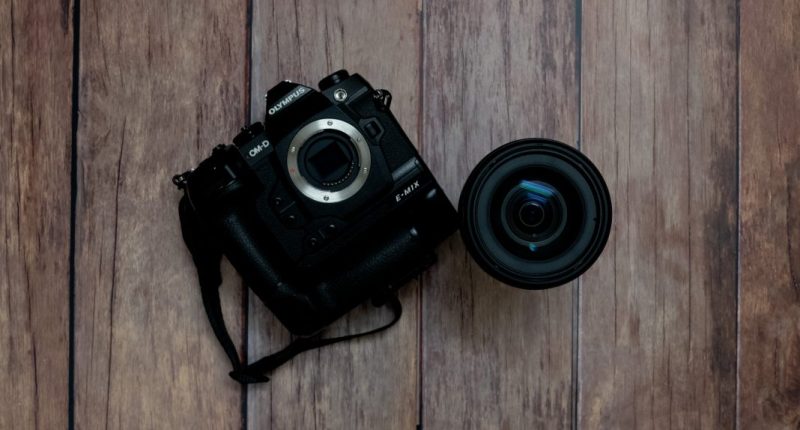Before the world came to an abrupt stop, I was able to get my hands on a camera that I’d been curious about for a while. Last year, 2019, had a packed release/announcement schedule for cameras, it was easy to miss some true gems. The Olympus OM-D E-M1X (E-MX1) is one that has been grossly overlooked and even unfairly criticized by forum photographers. We had the opportunity to live, work, and play with the E-M1X for an extended review to answer the question: Is there room in the world for a professional Micro Four-Thirds camera?

Olympus OM-D E-M1X Tech Specs
• Sensor Effective Resolution / Type: 20.4 Megapixel Live MOS
• Processor: Dual TruePic™ VIII Dual Quad Core Processors
• Focusing System: Dual F.A.S.T. AF (Contrast & Phase Detection AF) 121 Point (All Cross Type) On-Chip Phase Detection
• Image Stabilization System: 5-Axis Image Stabilization with up to 7.5 Shutter Speed Steps Compensation
• Viewfinder: 2.36M dot LCD Electronic Viewfinder
• Rear Monitor: 3.0″ Vari-Angle Touch LCD
• Weatherproof: Dust, Splash and Freezeproof (IPX1 Rated)
• Sequential Shooting Speed: 15fps [H] mode 10fps [L] mode mechanical shutter
60fps [H] mode 18fps [L] mode silent electronic shutter
• Special Features: Intelligent Subject Tracking AF, Live ND (Neutral Density Filter), 4k Video Capture (30/25/24 fps) with OM-Log Mode, PRO Capture Lag-Free Electronic Shutter Mode, Dual Battery Slots with USB Type C In-camera Charging, Integrated Vertical Grip with Ergonomic Controls
Dual UHS-II SD Card Slots, 400k Shot Shutter Life
Design and Ergonomics

One of the biggest gripes against the E-M1X from photo forums and some press is the size of the camera. Weighing in at 2.2lbs without a lens makes it the largest MFT format camera on the market, but the reality is that it won’t make sense until you hold it in your hand. Upon unboxing, what instantly became clear was how comfortable it was to hold.
The size of the E-M1X shouldn’t be a surprise considering at its most basic, the E-M1X is an OM-D E-M1 with a built-in battery grip. It adds to the E-M1X’s size and weight (and yes, the Internet lost it’s collective shit over the added size) but it also makes it one the best mirrorless cameras to hold and work with. During my review period I used the E-M1X extensively for everything from shooting events, portraits, and run-and-gun video paired with the Olympus M.Zuiko 12-100mm f/4 Pro lens. It never once felt off balanced or too front heavy. I was pleased with how comfortable it was to carry around this set up all day when covering Photo Plus Expo last Fall – one camera, one lens and never once feeling like I was missing a shot or being unprepared.

Design wise, the E-M1X does a number of things right. The top panel is straight-forward with a number of tactile buttons and switches to keep purist happy. Plenty of programmable buttons to keep frequently used functions within reach (and without needing to take your eye off the viewfinder). The E-M1X is purpose built to keep your head in the game and not in a menu system.
Real World Use

When first announced, the E-M1X was billed as a pro camera that was meant to shoot sports and outdoor photography and when paired with Olympus’s Pro-line of lenses, take advantage of the additional image stabilization to effectively shoot in low-light conditions. There have been improvements to the autofocusing algorithm and processor to keep focus steady and snappy.
For the most part, the E-M1X worked as advertised except that in my testing I found that the AF struggled when my subject was of a darker complexion or if there was lots of contrast, often favoring lighter/white surfaces. Some of the issues were alleviated by manually adjusting white balance and using a focus chart for calibrating the lens in between shoots, but it’s not something that I’d expect many people would consider as a fix.

While the camera’s inability to lock focus on darker skinned people is problematic, Olympus isn’t the only company to have this problem. It’s a widely reported problem across various sensor makers and a bane for autonomous vehicle sensors. (FWIW, Sony makes the sensor found in the E-M1X and Sony’s FE mount cameras struggle in this regard as well). I’m not letting Olympus off the hook here, instead I’d like to propose a solution – hire more engineers and designers of color. Olympus has a history of listening to the feedback their photographers give, and this is something that should go into consideration.

One of the happy accidents I stumbled upon during my testing period was coming across the robust video capabilities of the E-M1X. Make no mistake Olympus makes great stills cameras and the E-M1X is quite possibly the pinnacle of the Micro Four-Thirds camera, but this camera should get more love from run-and-gun style videographers and vloggers. The stabilization capabilities of the camera paired with a fully articulating screen, intuitive controls, and a wealth of native lenses and third-party cine-specific glass make this a formidable kit for video.
Final Thoughts

While many people were quick to criticize the EM1-X for its size and heft, it’s important to remember that this camera was designed for a very specific kind of a photographer. Much like the Sony a9 or Canon 1DX series, the EM1-X is purpose built to withstand the most abusive conditions and harshest elements. It’s integrated battery grip ensures that you won’t run into battery outages while out in the field or covering an event. Likewise, if you’ve been considering adding videography capabilities to your repertoire, the E-M1X is a solid choice with a wealth of available OEM and third-party lenses (including Cine lenses). Sure, it’s not perfect and the smaller Micro Four-Thirds sensor has its limitations, but for those looking for a reliable battle tank that weighs less than half of other options, the Olympus OM-D E-M1X deserves a second look.


















